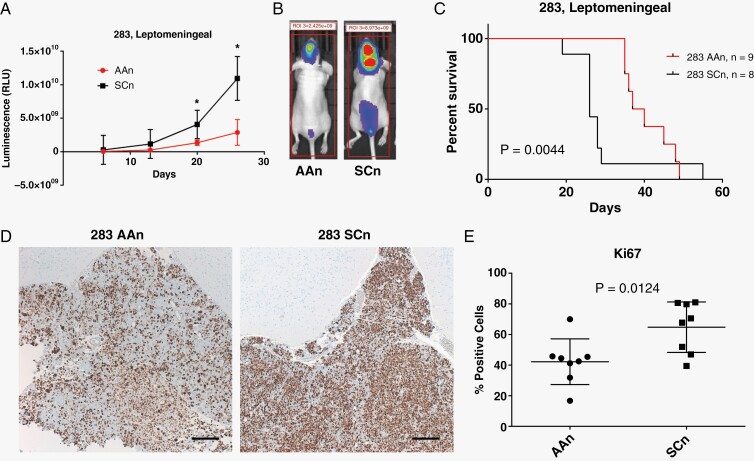Figure 4.
Knockdown of ABL1/2 decreases tumor burden in a mouse model of medulloblastoma with leptomeningeal dissemination. (A) Animals harboring ABL1/2 knockdown medulloblastoma cells (283 AAn, n = 8) demonstrated significantly less tumor spread as shown by whole-body bioluminescence compared to scrambled controls (283 SCn, n = 9) (mean and SD displayed, *=P < .05). (B) Representative bioluminescence profiles at day 20-post tumor implantation for ABL1/2 knockdown-harboring animals (283AAn) compared to scrambled controls (283 SCn). Bioluminescence images from every animal at every timepoint can be found in Supplementary Figure 3. (C) Animals harboring ABL1/2 double knockdown had significantly longer overall survival than animals harboring scrambled controls (P = .0044). (D,E) Histological analysis of tumor specimens reveals significantly lower proliferation index (Ki67) in 283 AAn compared to 283 SCn (P = .0124). Representative images (D) of tumor specimens found in the leptomeningeal compartment on the brain’s surface stained with Ki67 (brown) demonstrate less Ki67 positivity in the 283 AAn group (quantification in (E)). Additional examples of histological tumor location in the ventricle and the surface of the brain can be found in Supplementary Figure 4. All images were taken at 5× magnification. Scale bar = 200 µm. The mean values of each specimen were used in a non-paired student’s t-test of D283 AAn versus D283 SCn groups.

